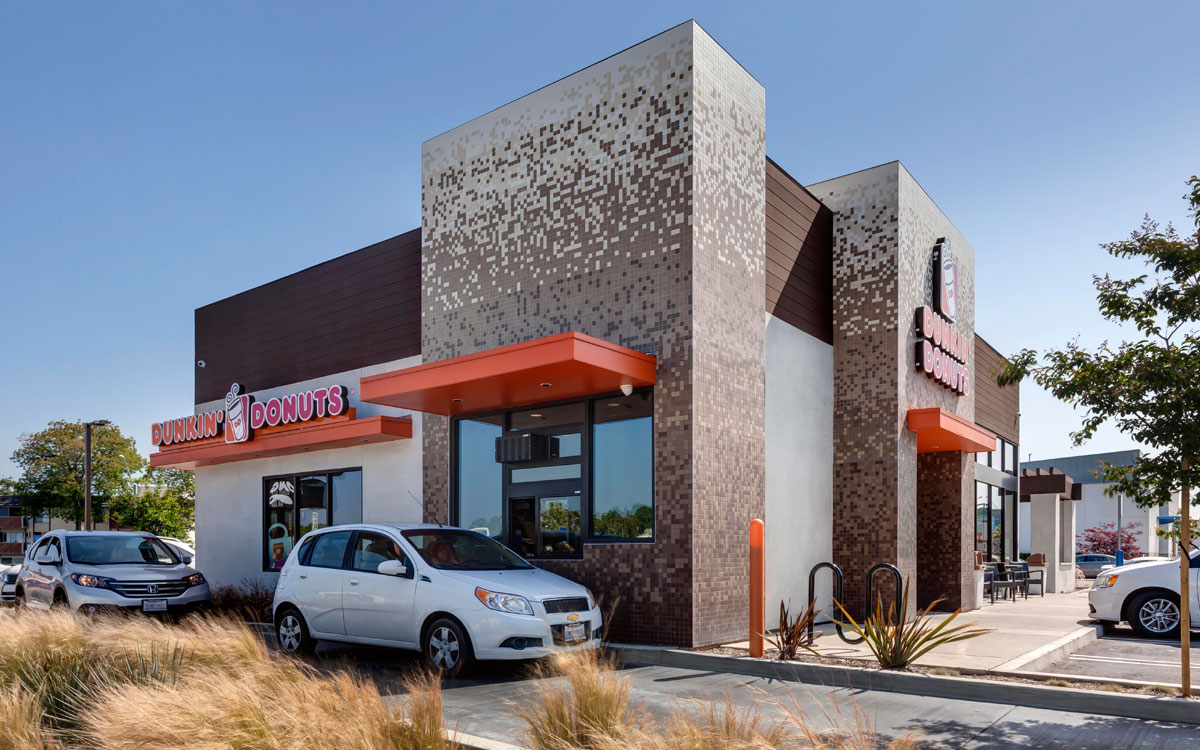With data being the currency grab it is today, quick-service restaurants are investing significant resources into their app offerings. Customer loyalty and access to a brand, whether through ordering, delivery, targeted deals, and more, represent some of the most valuable opportunities for chains and consumers to interact, and apps can provide an ideal gateway if designed and deployed correctly.
Analysts at SimilarWeb released new research on some of the industry’s leading apps—Starbucks, McDonald’s, Domino’s, and Dunkin’ Donuts. Here were the takeaways:
Daily Active Users
McDonald’s, as illustrated above, has been a steady climber when it comes to installs. In June 2017, the McDonald’s app was installed on 2.4 percent of U.S. Android devices. Nearly a later (May 2018), it was up significantly to 4.3 percent. That’s an increase of almost 80 percent. The company has said roughly 20 million people are using its app. Mobile order and pay is currently active in more than 20,000 restaurants. CEO Steve Easterbrook said in April there is room to grow since “current adoption is pretty low actually” for mobile ordering.
“We’ve still got things we’re trying to improve on our end, from the user experience perspective and training our teams in the restaurants and just getting the technology more reliable. But the adoption is still relatively low,” he said, adding that curbside pick-up has been the model of choice for mobile customers.
“It’s not anything that we’re going to put a massive emphasis behind, in terms of anything promotional, for example,” Easterbrook added. “However, I think it’s pretty inevitable that our customers will increasingly engage with us as a brand and as a business through their phones. So the fact that we’ve got a product out there that’s decent at the moment, I think there’s a lot of upside.
SimilarWeb’s data reflects some of these points. Despite the growth of installs, the number of people accessing the McDonald’s app daily did not increase significantly in the same period.
To compare, the number of daily active users of the Starbucks app in May 2018 was 10.6 percent higher than the previous June. A reason for this, according to SimilarWeb, is Starbucks’ app integration with its loyalty program. An article in USA Today, based on data from eMarketer, showed that more people are using Starbucks for payment than Apple Pay and Google Pay. It estimated that 23.4 million users in 2018 link with Starbucks for pay—a number it sees rising to 29.8 million by 2022. Apple Pay, on the other hand, predicts to 27.5 million users in five years. Google Pay to 14.9 million.
In the past quarter, Rewards member spend increased to 39 percent of U.S. company-operated sales at Starbucks. Mobile Order and Pay represented 12 percent of U.S. company-operated transactions. Starbucks said it added 5 million new digitally registered customers since April 2018, and 2 million active Starbucks Rewards members, year-over-year, to 15 million, an increase of 13 percent from the previous year.
Dunkin’ Donuts’ app, while installed on less than half the number of devices as Domino’s, generated 50 percent more daily active users than the pizza chain. Dunkin’ said in April that its On-The-Go mobile ordering platform was experiencing a retrial rate of 80 percent. Tony Weisman, Dunkin’s CMO, added that the brand was seeing “significantly higher” mobile order and pay in markets and stores that lend themselves to it. In other words, high density, urban stores. Some of the next-gen restaurants also have a dedicated drive thru just for mobile ordering.
“… We’re making the mobile order and pay pickup area clearer for consumers to see it, so that those who are not aware are trying it, because once they try, as we see, we see a higher level of usage, satisfaction, and loyalty,” he said. “And that really is among the most successful components of our entire loyalty program, and, as you would imagine, higher usage in certain locations.”
App Usage Throughout the Day
“The way app usage rises and falls throughout an average day is a good indicator of how consumers perceive and use the app,” SimilarWeb said. This is another area where Starbucks shines. Dunkin’ and Starbucks, understandably, see a spike at 8 in the morning. However, Dunkin’s app usage drops more precipitously throughout the day than Starbucks’ does. With all its U.S. traffic issues, Starbucks has made the app an essential part of its experience, and the results back that.
McDonald’s app peaks midday (lunch, makes sense. Also points to whitespace with breakfast, as this article talks about the challenges there).
“In each instance, these lulls in usage around the clock represent an indication about where the chain should focus its marketing. While there may be fewer opportunities to sell pizza in the morning, McDonald’s breakfast menu suggests that the restaurant would like to drive more app usage before 10 in the morning,” SimilarWeb said.
Domino’s ramps up after 2 p.m. and peaks at 6 p.m. This also falls in line with what you would expect from customer behavior. Domino’s is currently north of 60 percent on its digital orders, and 10 percent walk-in. About 25 percent or so are call-in phone orders. The brand has said before it hopes to become 100 percent digital some day, meaning kiosk, artificial intelligence, and other innovations would help its employees focus on pizza making, not on the order process.







